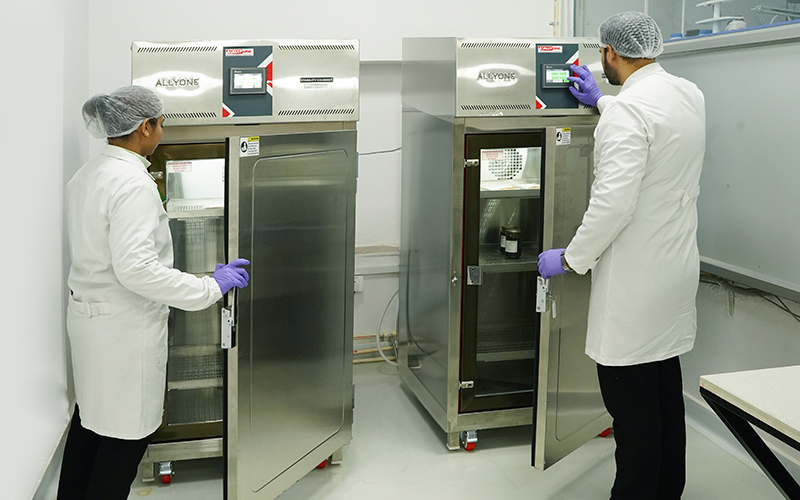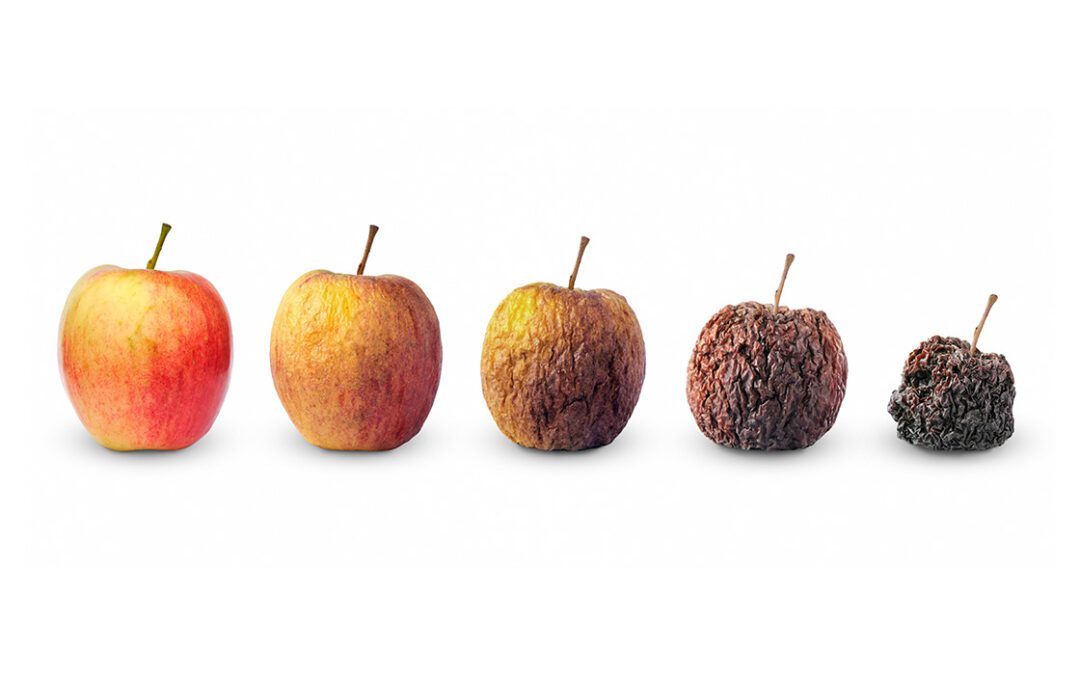A product’s shelf life is the cumulative of time, it can be maintained under particular storage circumstances while retaining its optimum safety and quality. Shelf life is determined by several factors, including its manufacturing method, type of packaging, storage conditions, and ingredients. It starts when the product is manufactured. Shelf-life testing is an important part of food quality and safety assurance in the food business because it ensures that intended quality features, such as taste, texture, colour, and nutritional content, are maintained under specified storage circumstances. The following are the critical steps and concerns in product shelf-life testing
10 Different Types of Shelf Life Testing
- Product Identification and Description for Shelf-Life testing: Define the product under test in detail, including its ingredients, formulation, processing processes, and packaging materials. This information forms the basis for the testing procedure.
- Microbiological analysis for Shelf-Life testing: Examine the product’s microbial load and the possibility of spoiling and harmful bacteria. Total plate count, yeast and mould counts, and the presence of specific pathogens are all examples of microbiological testing.
- Physical and Chemical analysis and for Shelf-Life testing: Examine the product’s chemical makeup, including moisture content, pH, acidity, fat content, and sensory qualities such as colour, flavour, texture nutritional parameters, and actives compounds.
- Accelerated Shelf-Life Testing: Products are exposed to circumstances (such as temperature and humidity) that accelerate the ageing process in this method. The data are then extrapolated to determine the shelf-life of the product under normal storage settings. This strategy aids in reducing testing time.
- Real-Time Shelf-Life Testing: This comprises storing the product in the specified storage conditions for a specified period of time and monitoring its quality throughout time. It is a more precise method, but it is time-consuming.
- Sensory Evaluation for Shelf-Life testing: To examine changes in taste, scent, texture, and appearance over time, conduct sensory testing using trained or consumer panels. Sensory evaluation is critical for establishing a product’s acceptability throughout its shelf life.
- Packaging Evaluation for products Shelf-Life testing: Assess the barrier qualities of the packing material and its impact on product shelf-life. Proper packaging is critical for maintaining product quality and safety.
- Regulatory Compliance for products Shelf-Life testing: Check that the product complies with statutory standards for shelf-life labeling, especially if it is perishable (perishable food) or possibly harmful.
- Labeling for Shelf-Life testing (Food products/ cosmetic products/beverage products/herbal products): Determine the “use by” or “best before” date to be printed on the product’s packaging based on the shelf-life test findings.
- Ongoing Monitoring for products Shelf-Life testing: Even after calculating the shelf-life, it is critical to conduct continual monitoring and periodic retesting to ensure that the product retains the claimed quality and safety.

Time is of the Essence: Extending Product Freshness with Shelf-Life Testing
Extending product freshness through shelf-life testing is an important element of the industry. Consumers want products that are fresh and safe, while the food industry wants to reduce waste while expanding product shelf life. Here’s how shelf-life testing can help you reach these goals:
- Optimizing Formulation for Shelf-Life Testing: Shelf-life testing aids food makers in refining product compositions. They can test alternate component combinations and processing procedures to find the best formula for the greatest shelf life while maintaining product quality.
- Quality Assurance for Shelf-Life Testing: Shelf-life testing assures that products meet or exceed quality standards throughout their storage period. This encompasses flavor, texture, color, and nutritional value.
- Reducing Food Waste for Shelf-Life Testing: A precise shelf-life determination reduces the likelihood of product spoilage and, as a result, food waste. It enables businesses to better manage their inventory, reducing the need for premature product disposal or discounting.
- Economic Benefits for Shelf-Life Testing: Manufacturers can save money by extending product freshness. Longer shelf life means that items can be sold for a longer period of time, potentially increasing revenue. It can reach rural areas to serve the biggest number of customers. It can also save money on product recalls and surplus inventory disposal.
- Consumer Satisfaction for products Shelf-Life Testing: Customers are more likely to trust and be satisfied with products that meet their freshness expectations consistently. Shelf-life testing guarantees that products remain safe and enjoyable for the length of their designated shelf life, improving consumer trust and loyalty.
- Meeting Regulatory Requirements for products Shelf-Life Testing: Many food products must meet legal labeling and product safety requirements. Shelf-life testing is essential for ensuring regulatory compliance and avoiding legal prosecution.
- Packaging Improvements for products Shelf-Life Testing: Manufacturers can utilize shelf-life testing to analyze and improve packaging materials and designs. Effective packaging can significantly improve the freshness of a product by preventing air, moisture, and light exposure, all of which can expedite decomposition.
- Environmental Impact on products Shelf-Life Testing: Extending product freshness reduces food waste, which is good for the environment. There is less waste of resources in production, transportation, and disposal, leading to a lower carbon footprint.
- Market Competitiveness for Products Shelf-Life Testing: Products that endure longer may have a competitive advantage in the market. Consumers generally choose products with a longer shelf life, especially for items they do not use quickly.
- Continuous Improvement for products Shelf-Life Testing: Shelf-life testing is an ongoing process. It encourages a culture of continuous improvement in products manufacturing companies. Product re-evaluation on a regular basis ensures that they remain fresh and safe throughout time, even when external conditions change.

Time is Running Out : How Shelf-Life Testing Ensures products Safety and Quality
In the food sector, “shelf-life testing” is a vital technique for ensuring food safety and quality. It entails a systematic assessment of a food product’s stability and characteristics throughout time and under different storage settings. It helps to ensure food safety and quality in a variety of ways, including microbial safety, pathogen control, preservation methods, quality attributes, ingredient interactions, packaging integrity, consumer confidence, regulatory compliance, waste reduction, economic efficiency, market competitiveness, and continuous improvement. Thus, shelf-life testing is an important part of ensuring food safety and quality. It enables food businesses to provide safe, high-quality products to consumers while reducing waste and meeting regulatory requirements. It’s a constant process that adjusts to changing conditions, guaranteeing that food safety and quality are never compromised.

Cultivator Phyto Lab, one of the best shelf-life testing lab facilities in Jodhpur, India
Cultivator Phyto Lab, Jodhpur, provides excellent testing facilities with scientific experts and ensures product quality control with shelf-life testing methods for various products such as AYUSH products, agriculture and food products, and others as per regulatory bodies. Our credentials and accreditation will fulfil your compliance requirements at the national and international levels, so you can enjoy boundary-free business.
Authors: Dr. Sanjoy Gupta and Kumar Nitesh
Reference:
- https://www.ncbi.nlm.nih.gov/pmc/articles/PMC6379691/
- https://www.sciencedirect.com/science/article/abs/pii/B9781845697013500153
- https://www.sciencedirect.com/science/article/abs/pii/B9781845693909500126
- https://www.canr.msu.edu/news/understanding-shelf-life-testing-for-packaged-food-products
- https://www.sciencedirect.com/science/article/abs/pii/B9780081004357000125

